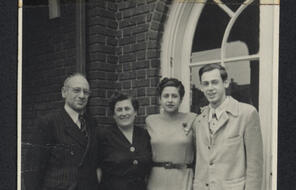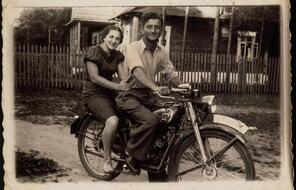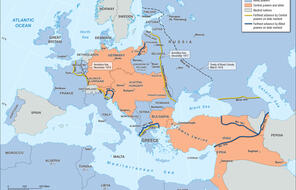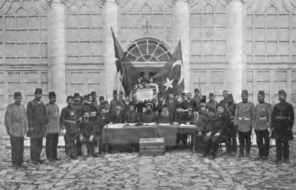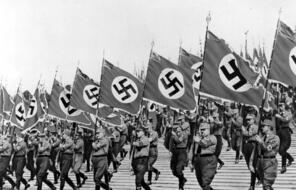How to Bring Nazi Leaders to Justice?
At a Glance
Language
English — USSubject
- Civics & Citizenship
- History
- Social Studies
- Human & Civil Rights
- The Holocaust
Long before the war was over, the Allied powers began to discuss how to hold Germany accountable for its wartime actions. They agreed that Germany had violated several internationally accepted rules of war. These rules had evolved as a result of wars and international conferences in the 1800s and early 1900s, and breaking them was considered a “war crime.” Germany’s war crimes included its aggressive invasion of other countries, its violation of international treaties, and its inhumane treatment of prisoners of war, hostages, and civilians. As early as 1941, both US President Roosevelt and Prime Minister Churchill of Great Britain had warned Nazi leaders that punishment for their murder of prisoners of war, hostages, and civilians would be a major goal of the war. On January 13, 1942, representatives of nine German-occupied nations signed a declaration, approved by the United States, Britain, and the Soviet Union, that not only those who ordered war crimes but also those who participated in them would be punished. A year and a half later, the Allies set up a commission to collect evidence of war crimes that could later be used in a trial.
During the war, Roosevelt, Churchill, and Soviet Premier Joseph Stalin discussed what it meant to hold Nazi leaders accountable and how they should be punished. Stalin suggested executing as many as 50,000 members of the German army. Churchill was in favor of executing high-ranking Nazi officials without a trial. There was debate about the question in the United States, as well. In September 1944, Secretary of the Treasury Henry Morgenthau, Jr., prepared a proposal for Roosevelt that stated what he believed should happen to a defeated Germany. In it, he wrote:
A list of the arch criminals of this war whose obvious guilt has generally been recognized by the United Nations [Allies] shall be drawn up as soon as possible and transmitted to the appropriate military authorities. The military authorities shall be instructed with respect to all persons who are on such list as follows:
- They shall be apprehended as soon as possible and identified as soon as possible after apprehension, the identification to be approved by an officer of the General rank.
- When such identification has been made, the person identified shall be put to death forthwith by firing squads made up of soldiers of the United Nations [Allies]. 1
In response to Morgenthau’s proposal, Secretary of War Henry Stimson argued for a very different plan. Stimson wrote to Roosevelt:
The method of dealing with [Nazi war criminals] requires careful thought and a well-defined procedure. Such a procedure must embody, in my judgment, at least the rudimentary aspects of the Bill of Rights, namely, notification to the accused of the charge, the right to be heard and, within reasonable limits, to call witnesses to his defense. I do not mean to favor the institution of state trials or to introduce any cumbersome machinery but the very punishment of these men in a dignified manner consistent with the advance of civilization, will have the greatest effect upon posterity. Furthermore, it will afford the most effective way of making a record of the Nazi system of terrorism and of the effort of the Allies to terminate the system and prevent its recurrence. I am disposed to believe that at least as to the chief Nazi officials, we should participate in an international tribunal [court] constituted to try them. They should be charged with offenses against the laws of the Rules of War in that they have committed wanton and unnecessary cruelties in conjunction with the prosecution of the war. 2
Stimson’s views were accepted, and the United States became committed to the idea of an international trial.
If the Nazi leaders were to be put on trial, however, the question was: What specific laws had they broken? The Hague conventions of 1899 and 1907, signed by the United States and all major European powers, had defined several laws of war, including how prisoners and populations of occupied countries must be treated, but there had been no agreement on punishment for those who violated such laws, and no procedures for conducting international trials had been established. In addition, the various rules provided in military manuals and treaties dealt only with crimes committed as part of a war. They did not deal with what Winston Churchill, in describing the mass murder of Jews and others, had called “the crime with no name,” to which Raphael Lemkin was later to give the name genocide (see reading, Raphael Lemkin and the Genocide Convention in Chapter 11). In 1915, during World War I, the Allies had, in response to the massacre of the Armenians (see reading, Genocide under the Cover of War in Chapter 3), formally accused Turkey’s leaders of a “crime against humanity and civilization.” Those leaders were to be tried in Turkey, but they had fled the country, so they had been tried without being present. Even though three Turkish leaders were found guilty and sentenced to death, they continued to live abroad and their trials never received much attention.
By the end of 1944, the United States was moving forward with plans for a trial after the war. A proposal sent by the War Department to President Roosevelt suggested that the German leaders should be tried for a “conspiracy to achieve domination of other nations and peoples by deliberate violation of the rules of war as they have been accepted and adhered to by the nations of the world, and violations of treaties and international conventions and customs, and mass extermination of peoples.” 3 Roosevelt brought the proposal to a conference with Churchill and Stalin at Yalta, in Crimea, a peninsula on the Black Sea in Ukraine. Stalin, seeing the propaganda value that public trials would provide, enthusiastically supported the plan. The British, though worried that such trials would simply be seen as “victor’s justice,” eventually agreed, as well.
Connection Questions
- What are “war crimes”? What war crimes did the Allies accuse Germany of committing?
- What options did the Allies consider for holding Germany accountable after the war? What arguments could be made for each option?
- Why did US Secretary of War Henry Stimson argue in favor of holding international war crimes trials after the Allies defeated Germany? What did he think would be the advantages of having such trials?
- What challenges did the Allies face once they agreed to bring Nazi leaders to trial?
- 1Bradley Smith, The American Road to Nuremberg: The Documentary Record, 1944–1945 (Hoover Institution Press, Stanford University, 1982), 28.
- 2 Bradley Smith, The American Road to Nuremberg: The Documentary Record, 1944–1945 (Hoover Institution Press, Stanford University, 1982), 30–31.
- 3Bradley Smith, The American Road to Nuremberg: The Documentary Record, 1944–1945 (Hoover Institution Press, Stanford University, 1982), 85.
How to Cite This Reading
Facing History & Ourselves, "How to Bring Nazi Leaders to Justice?," last updated August 2, 2016.





